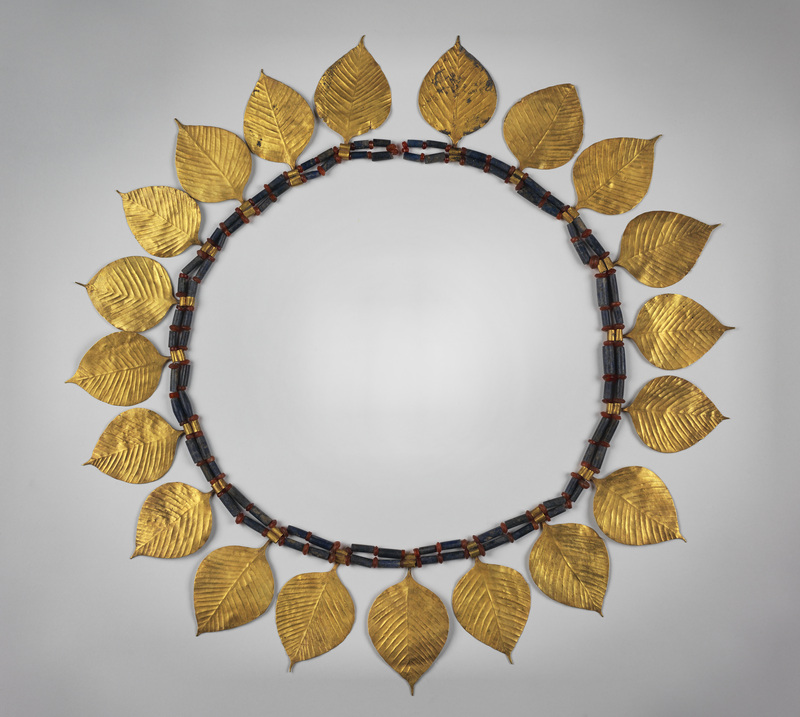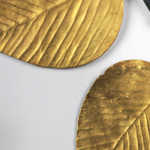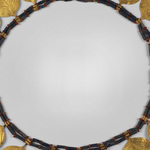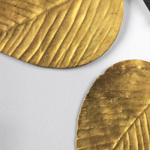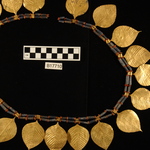Wreath
B17710
Location: On Display in the Middle East Galleries
From: Iraq | Ur
Curatorial Section: Near Eastern
| Object Number | B17710 |
| Current Location | Middle East Galleries - On Display |
| Provenience | Iraq | Ur |
| Archaeology Area | PG 800 |
| Period | Early Dynastic III |
| Date Made | 2600-2450 BCE |
| Section | Near Eastern |
| Materials | Gold | Lapis Lazuli | Carnelian |
| Description | Shubad, now Puabi. CBS Register: Queen Shubad's headdress. third crown. 20 gold leaves. two strings of lapis and carnelian. gold comb CBS 16693. One of Queen Puabi's wreaths. There are 20 gold (poplar) leaves, separated by two strands of carnelian and lapis beads. Each leaf is one piece of gold hammered out so that the attachment section folds over itself into two loops, which serves as a double joiner for those two strands of beads. The pattern for the beads is true for the beginning/end as well as in between each leaf. One small carnelian ring, a barrel lapis, a carnelian ring, a barrel laps, and ending with a carnelian ring. After the third leaf, from the right, when placed upright, the pattern breaks as the first two carnelian rings are missing. Also, after the 16th leaf, there is only 1 carnelian bead. In two cases the upper string doesn't go through the upper holes due to the bending being loose, and the string slipped out There are a total of 123 carnelian beads and 84 lapis beads. The two cuneiform signs that compose her name were initially read as "Shub-ad" in Sumerian. Today, however, we think they should be read in Akkadian as "Pu-abi." |
| Length | 74 cm |
| Width | 7.9 cm |
| Depth | 0.8 cm |
| Credit Line | British Museum/University Museum Expedition to Ur, Iraq, 1928 |
| Other Number | U.10935a - Field No SF |
Report problems and issues to digitalmedia@pennmuseum.org.


